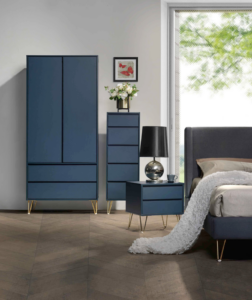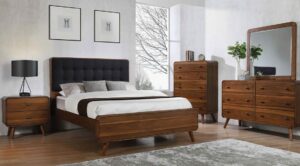The pandemic had many consumers focusing on their homes, which created record boosts to furniture sales. While furnishings are functional, they also hold psychological importance for shoppers, making the purchase extremely significant. In other words, a chair is much more than just a place to sit and a dining room table has meaning beyond being a place to dine.
According to early 20th-Century Swiss psychologist Carl Jung, our homes are an expression of our self-image. Since most people don’t design their own homes, furniture is the next thing they turn to in their homes to reflect their self-image.
Modern research echoes Jung’s hypothesis. In a 2013 study by Mississippi State University College of Business Marketing Professor Nicole Ponder, 72.7% of respondents agreed that furniture design reflects their personality. Ponder writes: “furniture is an emotional purchase for many people because it facilitates sharing and a sense of togetherness among friends and family in the home.”
Since furniture is so important, consumers deliberate on the purchase and consult friends and family for their opinions. In his book How We Think, John Dewey identifies five stages consumers move through when they consider making a purchase:
- Recognize a problem or need
- Search for information
- Evaluate alternatives
- Select the solution and make the purchase
- Evaluate the purchase after it’s completed
According to Ponder, furniture is an emotional purchase that takes lengthy deliberation and extensive problem solving since it’s expensive, expected to last for several years, and not purchased with great frequency. This can add time to steps two and three.
Some Retailers Make the Decision More Complicated
While consumers use plenty of thought before a furniture purchase, some retailers believe they’re helping by overloading them with options. But this creates what behavior change strategist Jennifer Clinehens calls the “choice overload effect,” which states that while some choice can be good, too much choice will overwhelm customers and become a barrier to sales.
Research from Episerver found that 46% of customers have failed to complete a purchase online due to overwhelming choices. A jam study by Columbia University Business Professor Sheena Iyengar illustrates this point. At a California gourmet market, Iyengar offered samples of jam, switching every few hours from a choice of 24 options to six. While 60% of customers were drawn to the larger assortment, only 3% made a purchase. Of the 40% who visited the smaller sampling, 30% made a purchase.
While presenting shoppers with more choices sounds good in theory, the reality is that too many choices is debilitating and can “jam up” your sales.
Offering Interior Designers Won’t Solve the Dilemma
Retailers may believe offering the services of an interior designer can help consumers with the psychological significance of a furniture purchase and solve the choice overload effect. However, a report by Furniture Today found that 81% of consumers have never used an interior designer, and 41% would not even consider using one.
The biggest reason is cost—factual or perceived. The majority of consumers believe that interior designers are expensive. Another major reason is that consumers want to shop for pieces and design their spaces themselves. They want control over their creation.
Shoptelligence Can Help
Understanding the importance of furniture to your consumers, the difficulties they may have in making these purchases, and the assistance they want (but may not want to pay for) is the first step towards better serving your customers. Shoptelligence has the tools you need to solve their dilemmas.
First, Shoptelligence addresses the choice overload effect with our AI-powered Interactive Ensembles. This tool understands your products, their functionality, and how they complement each other. With this deep product understanding, Shoptelligence curates and displays the optimal amount of choices for a shopper.
Shoptelligence can also address a shopper’s reluctance to use an interior designer. Our Interactive Ensembles are trained to reason and think like a designer. Furnishings for an entire room are generated around a single item a shopper is viewing, allowing the consumer to tap into the mindset of an interior designer without the time and price.
Consumers also want to design and decorate their homes themselves, and Shoptelligence provides shoppers with the ability to customize their ensembles, which can boost sales. The Participation Brand Index found that businesses that encourage co-creation with consumers frequently outperform their competition. Shoptelligence empowers your customers, giving you a competitive advantage.
By minimizing the “choice overload effect” and facilitating customer co-creation, Shoptelligence also allows you to tap into a powerful phenomenon known as the “IKEA Effect.” Harvard Business School researchers found that people attach more value to products they helped create. Since Shoptelligence’s Interactive Ensembles can be personalized, shoppers gain a feeling of ownership.
Finally, Shoptelligence assists your sales associates with our Site to Store feature, which allows them to get a close view of a shopper’s tastes and preferences by viewing both the Interactive Ensembles as well as the individual products they viewed prior to entering the physical store. These detailed insights enable your sales associate to better understand the shopper, close more sales, increase ticket sizes, and drive customer loyalty.
Bringing it All Together
A chair is more than a chair. Retailers that understand the psychology behind a purchase can help customers by managing their choices and inspiring the right selection. Learn first-hand how Shoptelligence can help you better serve customers online and in person, enhancing overall conversion rate by 1.71% and lifting AOV by $323. Schedule a demo today.






